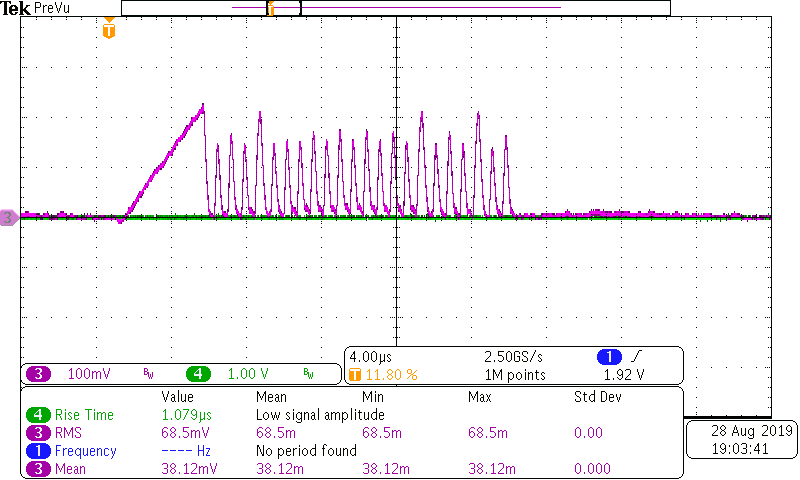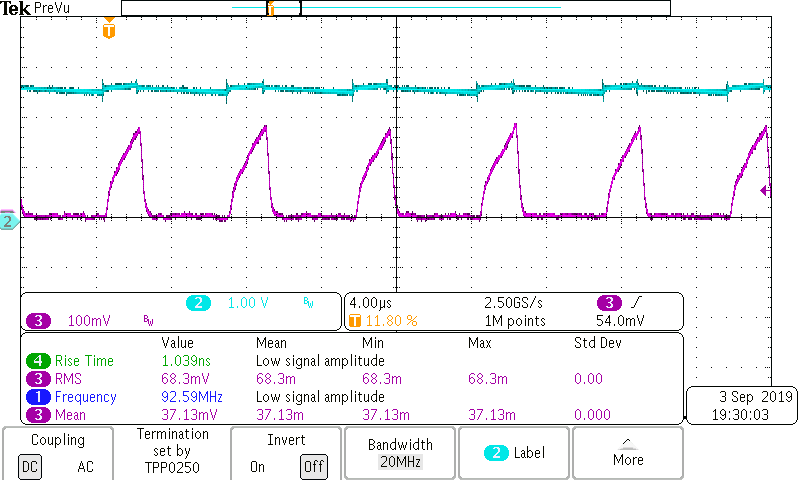Other Parts Discussed in Thread: LM3409
I'm trying to use the 3409 chip on its DEMO board, using EN for PWM. I am trying to drive single high-power LEDs. For instance 6A at 6V. I have beefed up the PMOS FET as well as the schottky diode and inductor.
I am trying to run the power supply loop at 1 MHz and the PWM at 20kHz.
Picture below is differential voltage across my sense resistor (0.033 ohm) which makes the scaling about 3A / box.
My problems seems that I cannot lower my delta current to a value like 500 mA. Note that my pp current is 3A. I cannot get a current picture like the one on the Users Guide Figure 5 (not the 3409HV users guide)
In figure 5 the current steps up from zero to about 1A and then the pp current centers around a 'DC' level of a with a pp value of about 0.5 Amps.
I would appreciate any insight you might have regarding this problem.
I need to have lower pp current to get a close-to linear output current when varying my PWM.
Thanks, Rich



